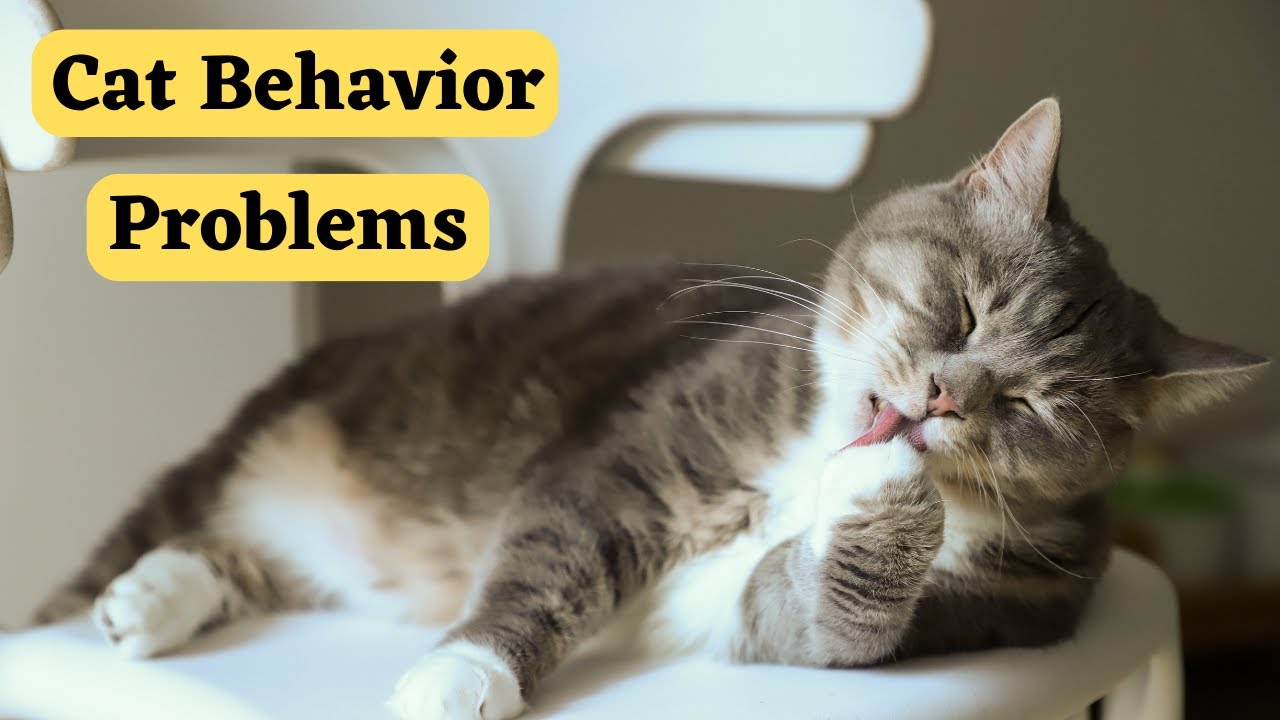


Posted by: admin on January 29, 2025
Cats, like humans, can exhibit a variety of behavioral issues. Understanding the root cause is key to finding the right solution. Here are some common problems:
1. Litter Box Issues
2. Scratching
3. Aggression
4. Excessive Vocalization
5. Fear and Anxiety
Important Notes:
बिल्लियाँ भी इंसानों की तरह कई तरह की व्यवहार संबंधी समस्याएँ दिखा सकती हैं। इन समस्याओं की जड़ को समझना ही सही समाधान खोजने की कुंजी है।
समस्या: लिटर बॉक्स के बाहर पेशाब या शौच करना।
कारण:
चिकित्सा संबंधी: यूरिनरी ट्रैक्ट इन्फेक्शन, ब्लैडर स्टोन, या गठिया (जिसके कारण बिल्ली के लिए बॉक्स में जाना मुश्किल हो जाता है)।
पर्यावरण संबंधी: गंदा लिटर बॉक्स, गलत प्रकार का लिटर, बॉक्स की गलत जगह, या तनाव।
व्यवहार संबंधी: अपने इलाके को चिह्नित करना (स्प्रे करना)।
समाधान:
चिकित्सा संबंधी समस्याओं को ख़ारिज करें: सबसे पहले किसी पशु चिकित्सक से सलाह लें।
साफ़-सुथरा लिटर बॉक्स दें: रोज़ाना लिटर को साफ़ करें और नियमित रूप से इसे बदलें।
पर्याप्त लिटर बॉक्स रखें: हर बिल्ली के लिए एक लिटर बॉक्स और एक अतिरिक्त बॉक्स रखें।
सही लिटर का उपयोग करें: ज़्यादातर बिल्लियाँ बिना सुगंध वाले, महीन दानेदार और इकट्ठा होने वाले लिटर को पसंद करती हैं।
लिटर बॉक्स को शांत और सुलभ जगह पर रखें।
तनाव कम करें: बिल्ली को शांत माहौल दें और घर में होने वाले बदलावों को ठीक से संभालें।
स्प्रे करने की समस्या के लिए: बिल्ली की नसबंदी (neutering/spaying) कराने पर विचार करें या किसी पशु चिकित्सक या व्यवहार विशेषज्ञ से सलाह लें।
समस्या: फर्नीचर, पर्दे, या कालीन को खरोंचना।
कारण:
प्राकृतिक व्यवहार: बिल्लियों को अपने पंजे ठीक रखने, इलाके को चिह्नित करने और मांसपेशियों को खींचने के लिए खरोंचने की ज़रूरत होती है।
बोरियत या तनाव: खरोंचना एक विस्थापन व्यवहार (displacement behavior) हो सकता है।
समाधान:
स्क्रैचिंग पोस्ट प्रदान करें: अलग-अलग बनावट (जैसे सिसाल, कार्डबोर्ड, कालीन) वाले पोस्ट दें और उन्हें उन जगहों के पास रखें जहाँ आपकी बिल्ली खरोंचना पसंद करती है।
फर्नीचर को कम आकर्षक बनाएँ: फर्नीचर पर डबल-साइडेड टेप, एल्युमिनियम फॉइल या व्यावसायिक बिल्ली निवारक स्प्रे का उपयोग करें।
बिल्ली के नाखूनों को नियमित रूप से काटें।
खेलने के लिए खिलौने, पज़ल फीडर और चढ़ने के लिए पेड़ जैसी चीज़ें दें।
समस्या: फुफकारना, गुर्राना, थप्पड़ मारना या काटना।
कारण:
डर: जब बिल्लियाँ खुद को खतरे में या फँसा हुआ महसूस करती हैं तो आक्रामक हो सकती हैं।
इलाके की रक्षा: बिल्लियाँ अपने इलाके या संसाधनों की रक्षा कर सकती हैं।
दर्द या बेचैनी: कोई चिकित्सा स्थिति बिल्लियों को चिड़चिड़ा बना सकती है।
खेलते हुए आक्रामकता: खेलते समय बिल्ली ज़्यादा उत्तेजित हो सकती है।
समाधान:
कारण की पहचान करें: जानें कि आपकी बिल्ली किस चीज़ से आक्रामक होती है।
आक्रामकता पैदा करने वाली स्थितियों से बचें।
एक सुरक्षित जगह दें: एक शांत जगह जहाँ आपकी बिल्ली पीछे हट सके।
सकारात्मक सुदृढ़ीकरण (positive reinforcement) का उपयोग करें: शांत व्यवहार के लिए बिल्ली को इनाम दें।
पशु चिकित्सक या व्यवहार विशेषज्ञ से सलाह लें: वे आपको व्यवहार सुधार योजना बनाने में मदद कर सकते हैं।
समस्या: बहुत ज़्यादा म्याऊँ-म्याऊँ करना।
कारण:
ध्यान खींचना: बिल्लियाँ आपका ध्यान, भोजन या खेलने के लिए म्याऊँ कर सकती हैं।
चिकित्सा स्थितियाँ: कुछ चिकित्सा समस्याओं के कारण बिल्ली ज़्यादा आवाज़ कर सकती है।
संज्ञानात्मक गिरावट (cognitive decline): बूढ़ी बिल्लियाँ संज्ञानात्मक शिथिलता के कारण ज़्यादा म्याऊँ कर सकती हैं।
बोरियत या अकेलापन: जब बिल्लियों को पर्याप्त उत्तेजना नहीं मिलती तो वे म्याऊँ कर सकती हैं।
समाधान:
चिकित्सा संबंधी समस्याओं को ख़ारिज करें: किसी पशु चिकित्सक से सलाह लें।
ध्यान खींचने वाली म्याऊँ को अनदेखा करें: केवल तब ध्यान दें जब आपकी बिल्ली शांत हो।
खूब मनोरंजन प्रदान करें: खिलौने, खेलने का समय और सामाजिक मेलजोल बढ़ाएँ।
एक साथी के बारे में सोचें: यदि आपकी बिल्ली अकेली है, तो एक और बिल्ली उसकी मदद कर सकती है।
समस्या: छिपना, काँपना, या ज़रूरत से ज़्यादा खुद को संवारना।
कारण:
नया माहौल या लोग: बिल्लियाँ अपरिचित चीज़ों से डर सकती हैं।
पिछला आघात (trauma): बिल्लियों को अतीत में बुरे अनुभव हुए हो सकते हैं।
समाजीकरण की कमी: जिन बिल्ली के बच्चों का ठीक से समाजीकरण नहीं हुआ, वे डरपोक हो सकते हैं।
समाधान:
एक सुरक्षित जगह दें: एक शांत जगह जहाँ आपकी बिल्ली पीछे हट सके।
धीरे-धीरे सामने लाएँ: नई चीज़ों को धीरे-धीरे और सकारात्मक तरीके से पेश करें।
सकारात्मक सुदृढ़ीकरण का उपयोग करें: शांत व्यवहार के लिए बिल्ली को इनाम दें।
फेरोमोन डिफ्यूज़र (pheromone diffusers) का उपयोग करें: ये शांत माहौल बनाने में मदद कर सकते हैं।
पशु चिकित्सक से सलाह लें: अगर आपकी बिल्ली के व्यवहार में अचानक या असामान्य बदलाव आता है, तो किसी भी चिकित्सा कारण को ख़ारिज करना ज़रूरी है।
धैर्य रखें: व्यवहार में बदलाव लाने में समय और निरंतरता लगती है।
पेशेवर मदद लें: अगर आपको अपनी बिल्ली के व्यवहार संबंधी समस्याओं को हल करने में दिक्कत हो रही है, तो एक प्रमाणित बिल्ली व्यवहार विशेषज्ञ मार्गदर्शन और सहायता प्रदान कर सकता है।
COMPILED AND WRITTEN BY
PRIM VET CLINIC , INDORE
6005484091